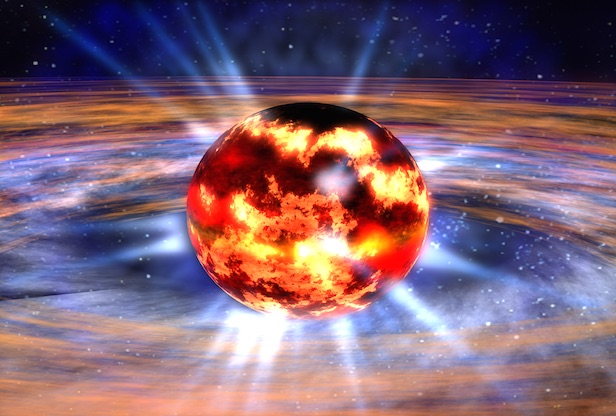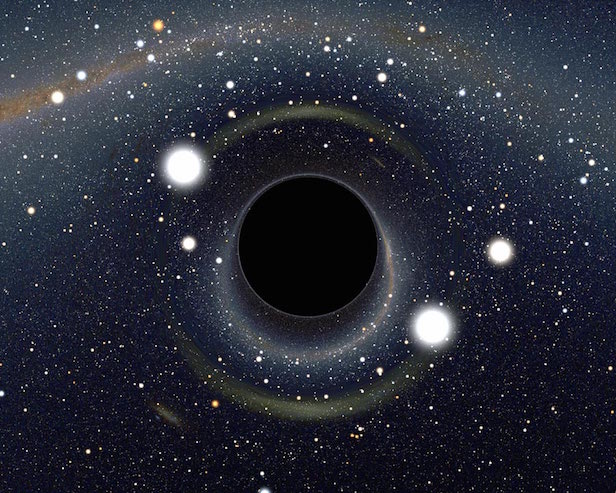Baby black holes may have forged gold and platinum
Astronomers believe that the heaviest elements were formed from the very first versions of these exotic objects

A spoonful of a neutron star’s surface has the equivalent mass of three billion tons. Image credit: NASA
There are a variety of elements scattered around the universe, even us humans are made up of stellar by-products such as carbon, nitrogen and iron. But as for the heavier elements, astronomers are now claiming that they are created when dense neutron stars are devoured by primordial, tiny black holes, and the resulting supernova explosion expels these heavy elements into the universe.
When an average star – like our Sun – undergoes nucleosynthesis, it starts with an abundance of hydrogen and helium, and eventually combines their protons and neutrons to create many elements, including carbon, oxygen, nitrogen and finally iron. Iron is the heaviest element that can be created by a star before a supernova explosion occurs, but this process doesn’t explain the observed heavier elements throughout the universe.
“A different kind of furnace was needed to forge gold, platinum, uranium and most other elements heavier than iron,” explains George Fuller, a theoretical astrophysicist at University of California San Diego (UCSD). “These elements most likely formed in an environment rich in neutrons.”

Tiny black holes originate from the Big Bang, and could make up some fraction of dark matter. Image credit: NASA/Alain Riazuelo
Astronomers at UCSD and University of California, Los Angeles (UCLA) have suggested that as neutron stars come in contact with tiny black holes, they are captured and eventually destroyed. This violent process can lead to an ejection of the densest star matter in space.
“Small black holes produced in the Big Bang can invade a neutron star and eat it from the inside, in the last milliseconds of the neutron star’s demise. The amount of ejected neutron-rich material is sufficient to explain the observed abundances of heavy elements,” Fuller explains. “As the neutron stars are devoured, they spin up and eject cold neutron matter, which decompresses, heats up and make these elements.”
Tiny black holes are a speculative subject, but many astronomers believe that are a result of the Big Bang, the event that is widely accepted to have given rise to the universe. If this theory is correct, it could also explain other unanswered questions regarding heavy elements in dwarf galaxies. “Since these events happen rarely, one can understand why only one in ten dwarf galaxies is enriched with heavy elements,” explains Fuller. “The systematic destruction of neutron stars by primordial black holes is consistent with the paucity of neutron stars in the galactic centre and in dwarf galaxies, where the density of black holes should be very high.”
Keep up to date with the latest space news in All About Space – available every month for just £4.99. Alternatively you can subscribe here for a fraction of the price!




